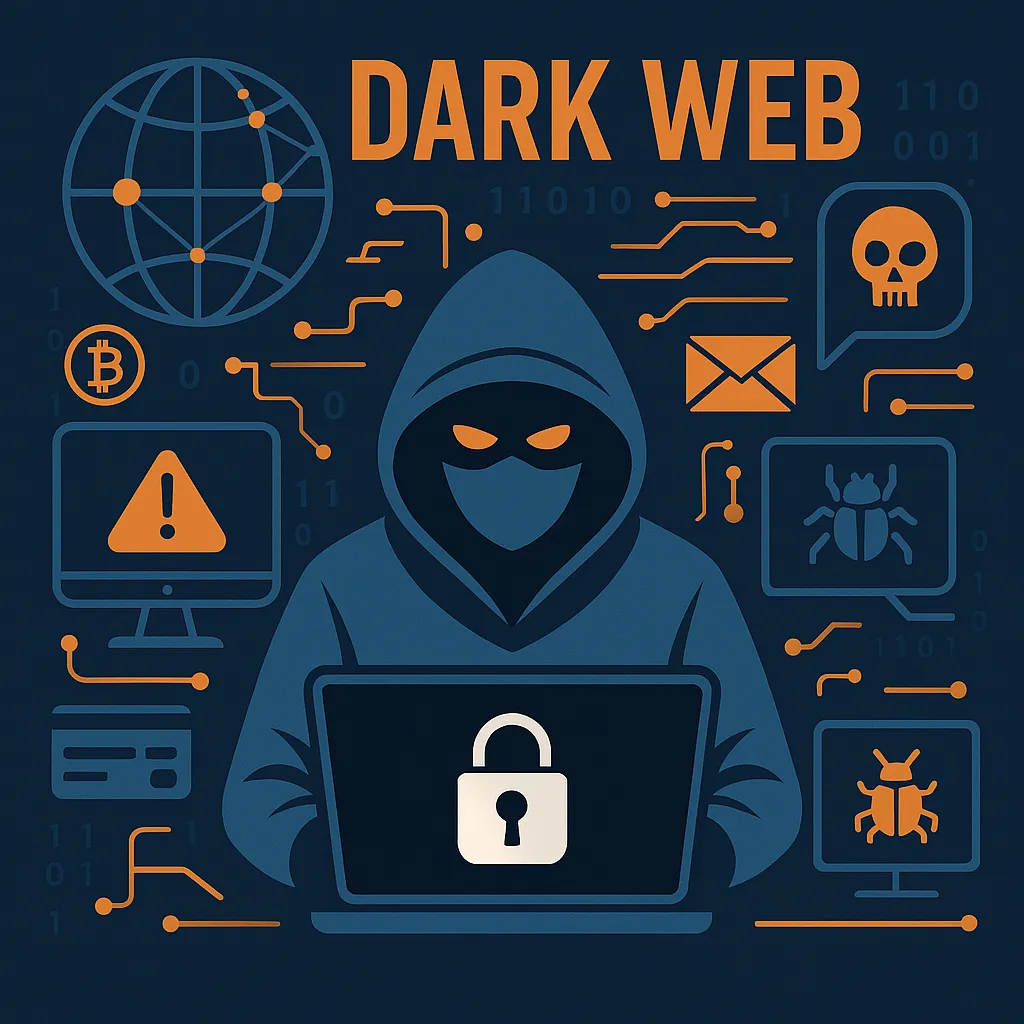Into the Shadows: Unraveling Dark Web Threat Intelligence
The term 'Dark Web' often conjures images of an underworld teeming with criminality and hidden dangers. For businesses, understanding this hidden segment of the internet is not just about curiosity but a critical aspect of cybersecurity. This blog will uncover what the Dark Web is, the type of threats that exist there, and how businesses can utilize Dark Web threat intelligence to protect themselves.
What is the Dark Web?
The Dark Web is a small portion of the Deep Web that is intentionally hidden from conventional search engines and requires specific software to access. Predominantly used for anonymity, it hosts a variety of both legal and illegal activities.
Understanding Dark Web Threats
Dark Web threats range broadly from illicit drug and weapon sales to the trade of stolen digital data, such as credit card information and personal identities. Sites within the Dark Web facilitate the sale of malware, with prices varying based on the sophistication of the tool—from as low as $70 to upwards of $6000 for premium malware sets (Proofpoint). Cybercriminals often use these tools for malicious purposes, including hacking and cyberattacks (Kaspersky).
The Role of Dark Web Threat Intelligence
Dark Web threat intelligence is the practice of collecting and analyzing information about activities within these obscured parts of the internet to predict and prevent cyber threats. Facilities like the cybersecurity departments of companies utilize this intelligence to monitor and mitigate potential threats such as data breaches or malware attacks. By understanding the specifics of what is sold and traded on these clandestine sites, companies can better secure their assets (Bitsight).
Monitoring and Proactivity
Incorporating Dark Web monitoring into cybersecurity strategy is a proactive measure. Tools and protocols are deployed to keep an eye on cyber threats looming in the Dark Web. This approach not only includes tracking potential threat sources but also involves regular assessments to ensure that organizational data has not been compromised (Prey Project).
Case Studies and Examples
In recent incidents, major companies have been victims of data breaches with their sensitive data being sold on the Dark Web, leading to significant financial and reputational damage. For instance, credit card information, which can be sold for up to $100 per record, has been a common commodity in these markets.
Real-World Impact of Dark Web Intelligence
The strategic use of Dark Web intelligence can not only prevent financial losses but also strengthen a company's resilience against cyber threats. By understanding the latest tools and tactics used by cybercriminals, enterprises can enhance their security postures effectively and efficiently.
Conclusion and Takeaway
To effectively counter the threats posed by the Dark Web, businesses must adopt robust cybersecurity strategies that include Dark Web monitoring and intelligence. Staying informed about the latest trends and threats in the cyber underworld is crucial for maintaining security in today's digital landscape.
